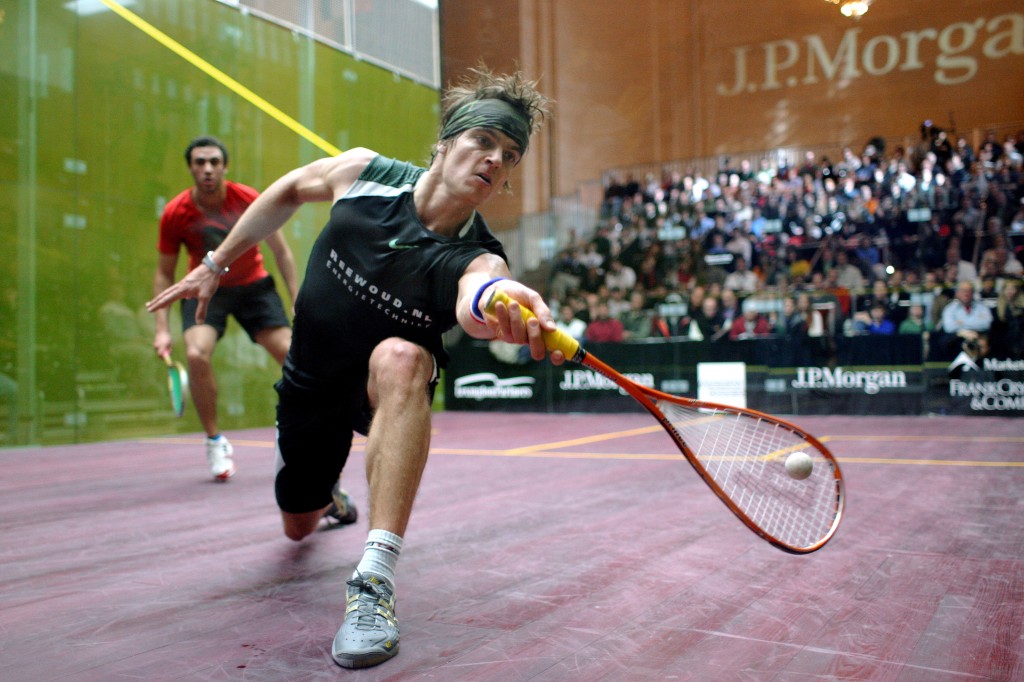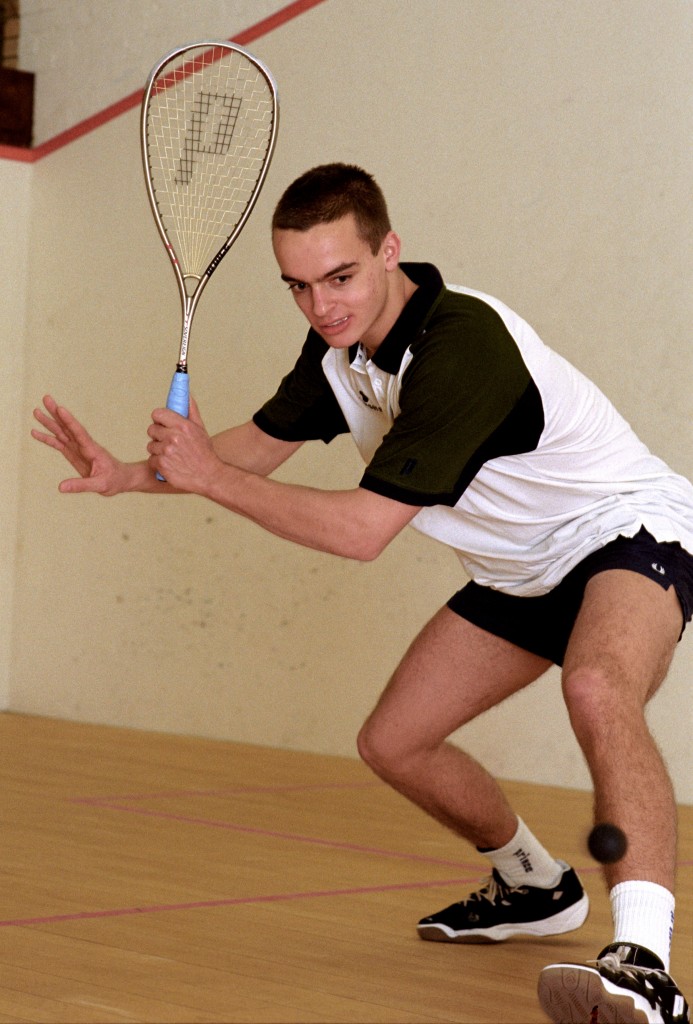By Damon Leedale-Brown, Sports Scientist & Conditioning Specialist
In the previous issue we began to discuss the concept of ‘Talent’ in sport, and considered those factors that seem to explain what separates the very best from us mere mortals! This month we continue to follow the pathway taken by Laurens Jan Anjema (Dutch National Champion and World No. 15) as he made the transition from a junior player into the world of professional squash. This should help us understand some of the critical elements of development that are needed in moving you towards excellence in squash, sport or other aspects of life.

Personal mindset:
Even as a junior LJ, showed a high level of discipline in his approach to squash, and much of this he puts down to his parents’ influence. During free study periods (50 minutes) at high school, LJ calculated that if he cycled as fast as possible he could reach his local squash club in 10 minutes. He then allowed 8 minutes to get changed and showered after, and another 10 minutes to cycle back to school. That left him with 22 minutes of solo practice time which he split—11 minutes forehand and 11 minutes backhand! LJ followed this routine over his last 2-3 years of high school. It was at this point that his parents realized he was serious about trying to make it as a professional squash player, and had the mindset they believed necessary to commit himself completely to a career as a professional athlete striving for excellence in his chosen sport.
Parental Support & Key Decisions:
Having seen his dedicated approach to the sport during high school, LJ’s parents were very supportive of his desire to be a professional squash player. As he came towards the end of high school they asked him two simple questions: Who was the best player in the world? An easy question for LJ as he had a poster of Peter Nicol above his bed! And who was Peter Nicol’s coach at that time? After some research, LJ found that Peter’s coach was former England player Neil Harvey, and he was able to get Harvey’s contact number from the Dutch National Coach at that time. LJ’s parents encouraged him to call Harvey to ask if he could go over to England and train with him.
 Understanding the need for challenge in your training:
Understanding the need for challenge in your training:
Harvey responded positively to LJ’s call and invited LJ and another Dutch junior player to England for a trial week to see if they could cope with the intensity and discipline expected from players who were part of Harvey’s training group. As LJ succinctly puts it, “We spent the week getting absolutely killed physically.” But, at the same time, for LJ it was a dream to be in the same club training alongside the No. 1 player in the world. At the end of the week LJ was sore everywhere and could barely walk! However, LJ knew deep down that if he really wanted to become one of the best players in the world, this was the environment he needed to immerse himself into during the early periods of his training as a professional player.
Building the hours of purposeful practice:
A month later, LJ moved to England but his Dutch Junior teammate decided not to join him. Without a break for the next six months, LJ followed a schedule of training twice a day for six days per week! It was a really tough regimen under the direction of Harvey who worked hard to ensure that every training session had discipline, structure and purpose, along with the physical and mental intensity required to help players prepare for competition. On mornings that LJ struggled to get out of bed and get moving (which were quite frequent!), he was still motivated by the thought that he was training with his ‘squash idol’—and this was his dream.
The family LJ was staying with lived 30 minutes from the club. With no transport of his own, LJ walked to the club every morning, trained for two hours, walked back for lunch, then back again for his afternoon session followed by his final walk home at the end of the day—this amounted to two hours of walking each day on top of his training! Again this demonstrated the lengths LJ was prepared to go to in his desire to become a World Class player—something as simple as a two-hour walk each day, around 4-5 hours of tough training, was not going to stop him following his goal of being a top squash player.
 Learning from losses & disappointments:
Learning from losses & disappointments:
After six months of training in England, LJ went back to Holland to take part in the playoffs for the Dutch Men’s National Team. There was a buzz amongst the Dutch Squash community and high expectations of LJ as he had moved away from Holland to ‘train with the coach of the No. 1 player in the World.’ In the first round of the play-offs, LJ was drawn against the junior player who had come across to England with LJ for the initial trial week with Harvey. This was also a player that LJ had always beaten as a junior.
LJ lost the match 3-1 and was on a flight the same night back to England! LJ was obviously hugely disappointed, especially after all the months of hard training, but Harvey helped him put this result in perspective, reinforced that this was a longterm process for future success as a World Class player—not a short term fix—and motivated LJ to keep believing in the path he was following. A few months later in, March 2002, LJ played his first two pro tour events, the Swiss Open in Geneva and a tournament at Meadow Mill Athletic Club in Baltimore— he made the finals in both events.
In this article, we have gone a step further in developing our understanding of some of the elements that appear to have played a significant part in LJ’s pathway towards excellence in his sport. If we were to look at other top squash players and elite athletes we would undoubtedly see many commonalities in the path they have taken, yet struggle to find examples of individuals who just happened to be born with a ‘gift for the game.’
In our final article in this series we will look at some of the key messages we can take away from the path that LJ took in becoming a World Class player, and also present great examples from recent scientific research that really highlight why ‘Talent Is Truly Overrated’!





